Turin lights up again with the 27th edition of Luci d'Artista
On Friday, October 25, Turin will once again shine thanks to the first lighting of the Luci d’Artista event light installations. The city’s sky will once again be transformed by the works of great artists, created especially for public spaces. Once again this year, Fondazione Torino Musei, commissioned by the City of Turin, has been asked to take charge of the project’s implementation and enhancement. Luci d’Artista represents the Foundation’s fifth cultural line, alongside GAM, MAO, Palazzo Madama and Artissima. The goal is to transform the event into a permanent institution dedicated to artistic research. In this edition, it will continue and strengthen the approach already introduced in the 26th edition, which received positive feedback from the public. In collaboration with curator Antonio Grulli, efforts will be intensified to extend activities beyond the boundaries of the winter season through annual programming. The various sections of Luci d’Artista will also be redefined, with a new course involving enhanced communication, now increasingly projected on an international scale. Social networks will be revamped, and the website will collect the history of the event.
The goal is to enhance a unique and extraordinary collection, ensuring stable national and international visibility. The aim is to make the event even more inclusive and ecologically sustainable: with about one million LED light sources, Iren will ensure greater brightness while reducing energy consumption. Luci d’Artista is a project and heritage of the City of Turin, implemented by Fondazione Torino Musei with the support of Fondazione Compagnia di San Paolo, Fondazione CRT, Consulta per la Valorizzazione dei Beni Artistici e Culturali di Torino, Unione Industriali Torino, Torino 2025 FISU World University Games Winter and Audemars Piguet Contemporary. The main sponsor is the Iren Group. For the 27th edition, Luci d’Artista is enriched with two light installations, created by outstanding artists chosen by the recently renewed Luci d’Artista Scientific Committee. The committee currently consists of Chiara Bertola and Francesco Manacorda, directors of GAM - Galleria Civica d’Arte Moderna e Contemporanea and Castello di Rivoli - Museo d’Arte Contemporanea, respectively, along with Antonio Grulli, curator of the initiative. The selection of artists for Luci d’Artista 27 is the result of numerous meetings among the committee members, where the intention emerged to pair an important figure in global art with a great master. The chosen ones are Andreas Angelidakis (Athens, 1968) and Luigi Ontani (Vergato, 1943), who present the light works VR Man and Scia’Mano.
Andreas Angelidakis’ VR Man work in Vittorio Veneto Square draws inspiration from the classical iconography of Greek and Roman sculpture, an area of work the artist has been exploring for years. The figure is integrated with a characteristic element of classicism: a capital placed on its head, transforming it into a modern caryatid. The work recalls athletic practice, fundamental to the Olympic Games, and emphasizes the inseparable connection between physical, intellectual and spiritual activity, as conceived in Greek antiquity. VR Man’s presentation received support from Torino 2025 FISU World University Games Winter and Audemars Piguet Contemporary, commissioner of the Center for the Critical Appreciation of Antiquity (2022) project.
From the artwork’s fact sheet "A giant made of light has landed in Turin. A stylized human silhouette, on whose head an Ionic capital seems to be superimposed (perhaps a modern caryatid? a minotaur?), stands out vigorously alluding to the iconography of classical, Greek and Roman statuary. The Light designed by artist Andreas Angelidakis recalls the image of an athlete and was created for the occasion of the FISU World University Games Winter scheduled for January 2025 in Turin and Piedmont. Angelidakis has always drawn images, cues, inspirations, stories and anecdotes from classical Greece, making them tools and metaphors to reflect on our present and our ways of living. The title VR Man hints at how the capital, placed at eye level, can be at the same time a virtual reality visor. The reference to the Olympic games and athletic discipline of antiquity, when the body was never separated from the mind, spirit and intellectual activity, is evident. Andreas Angelidakis calls himself an architect who does not build. In his works he uses installations, sculptures, videos, digital processing, texts and new technologies to investigate the space where art and architecture overlap."
Luigi Ontani’s work Scia’Mano, in the Sambuy Gardens in Piazza Carlo Felice, as the title suggests, relates to the universal figure of the shaman.
From the work’s fact sheet "The city of Turin inspired Maestro Luigi Ontani for his Light entitled Scia’Mano. The installation consists of a large, round, double-sided lightbox in which photographs on both sides are printed on a lenticular support. In the images, which are always in motion and ready to change according to the viewer’s point of view, we see the artist impersonating a shaman, to whom the shape of the mask - made in Bali with I Wayan Sukarya - also alludes with a play on words, recalling a hand. The subject evokes the magical tradition of Turin, and the location of the work, on the northern edge of the Sambuy Gardens, dialogues with the spot where the Fogola bookstore and publishing house frequented by the artist in the past, a sign of which has survived. Literary references are frequent in Ontani’s work and, not coincidentally, the square in front of Porta Nuova station has a place in literary history due to the tragic end of Cesare Pavese. Luigi Ontani is one of the great masters of art, and his figure has transcended Italian and Western borders for decades: he has revolutionized artistic languages since the 1960s through his performances, his Tableaux Vivant, and his videos. He has always used photography as an artistic form to explore new identities, as a vehicle for reinterpreting art history, and was the first artist to “expand” it into gigantographs, as in the case of the work Scia’Mano"
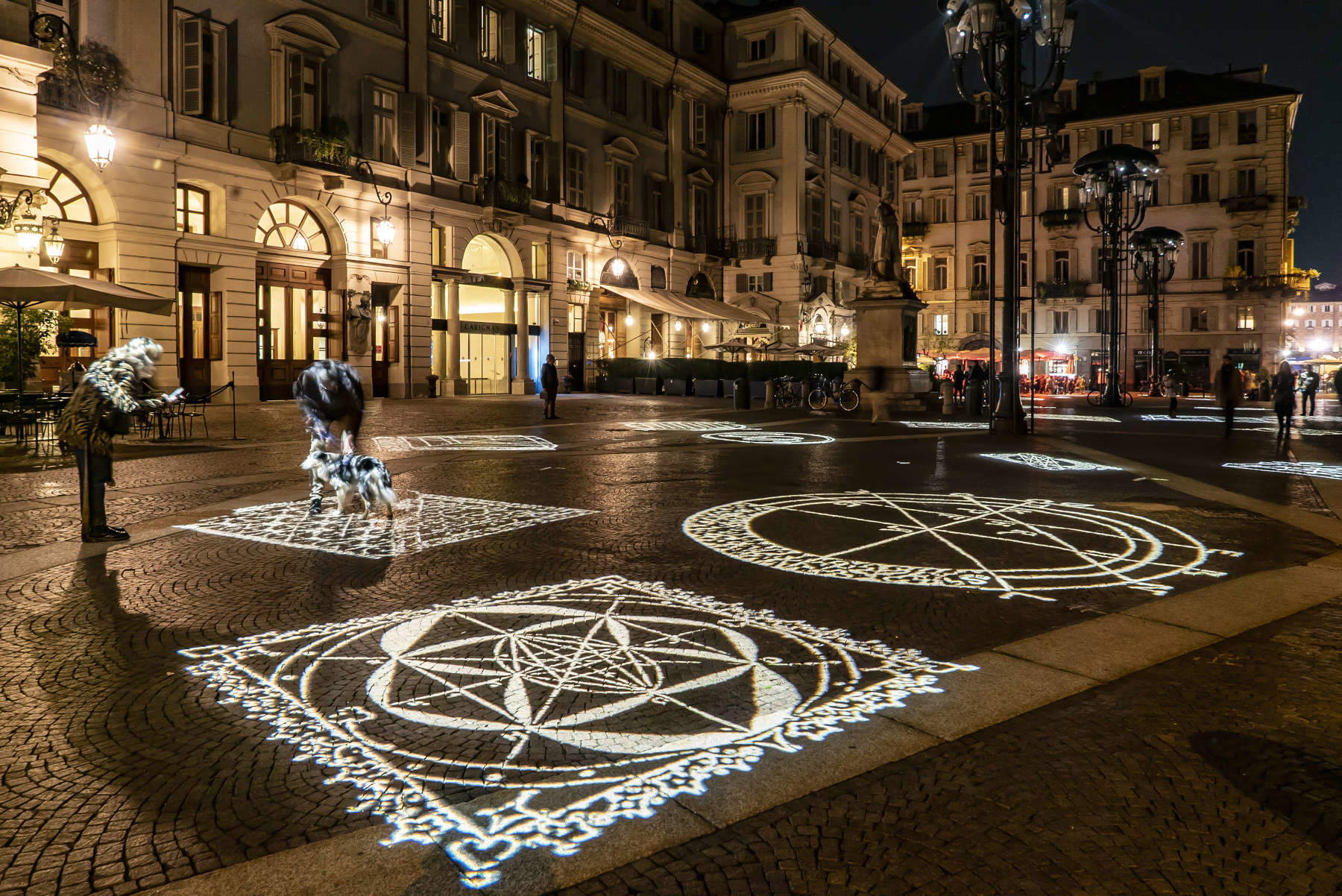
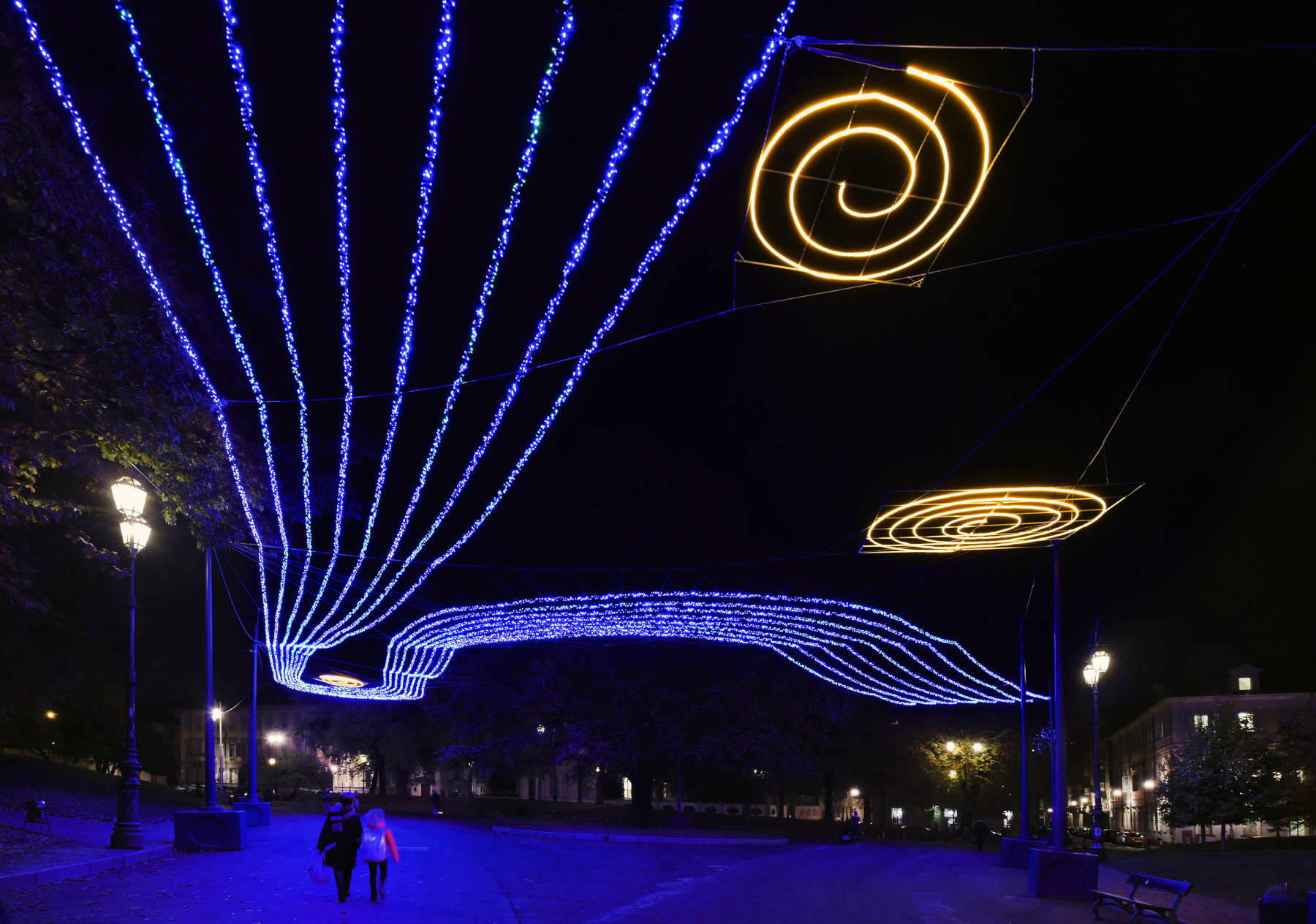
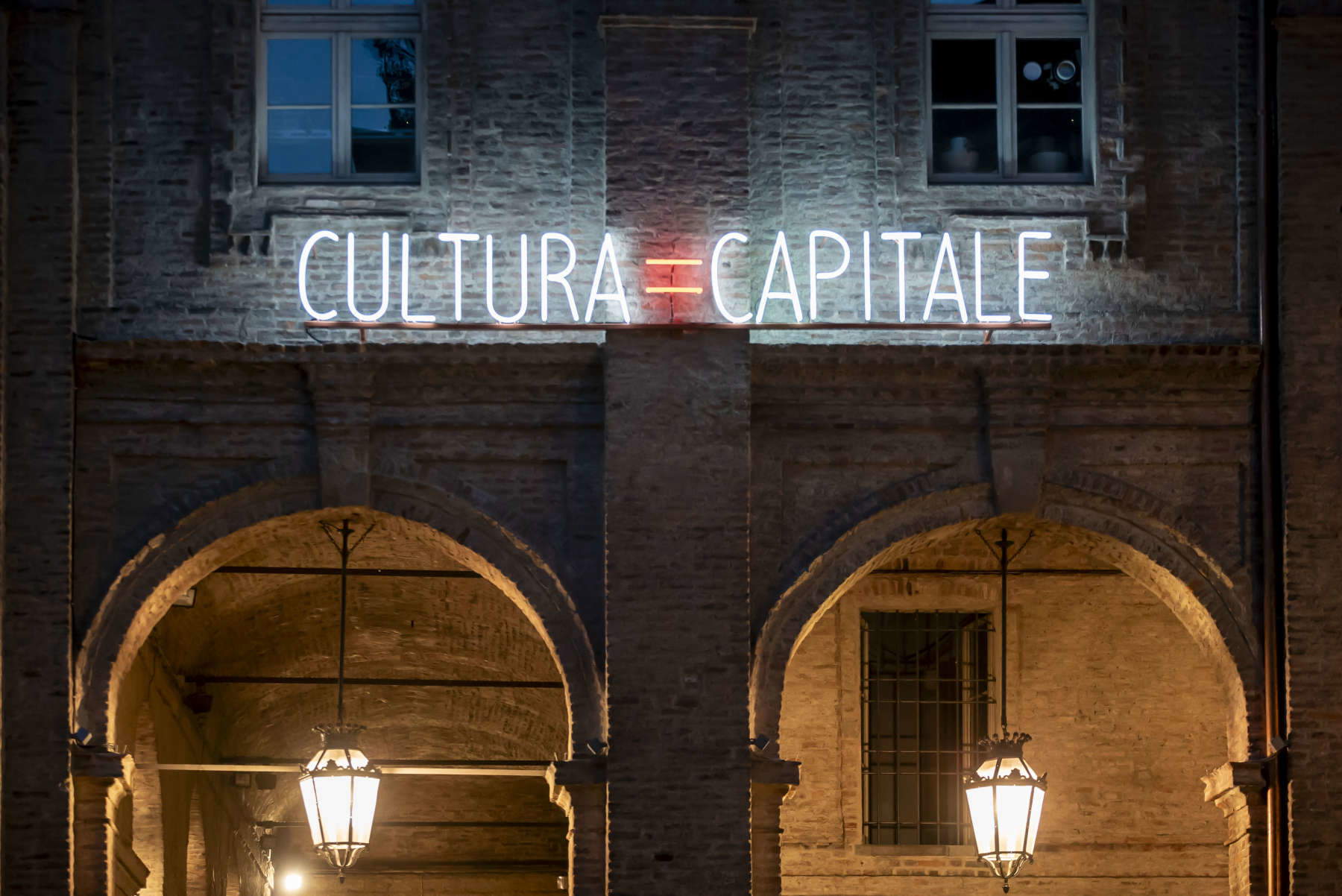
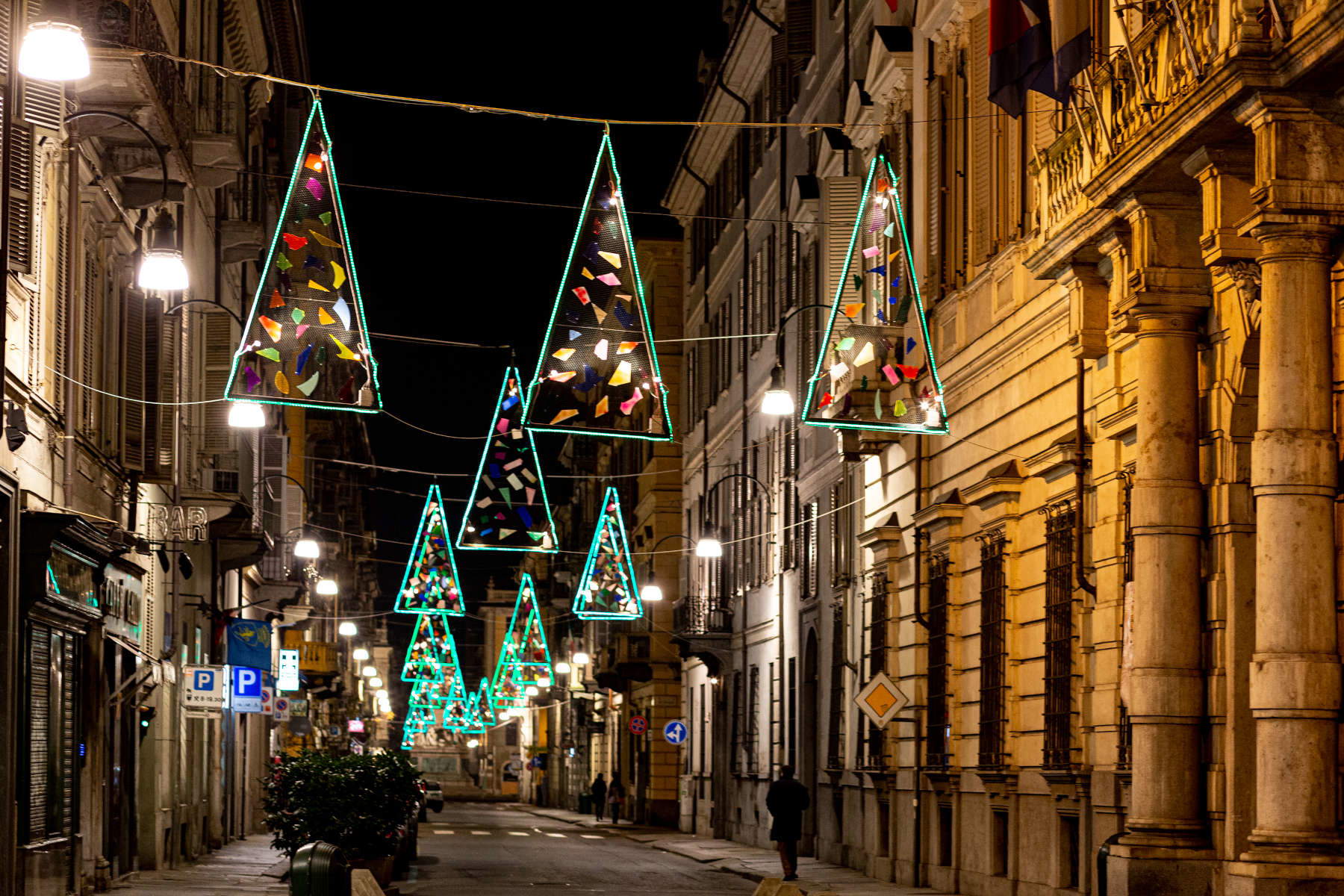
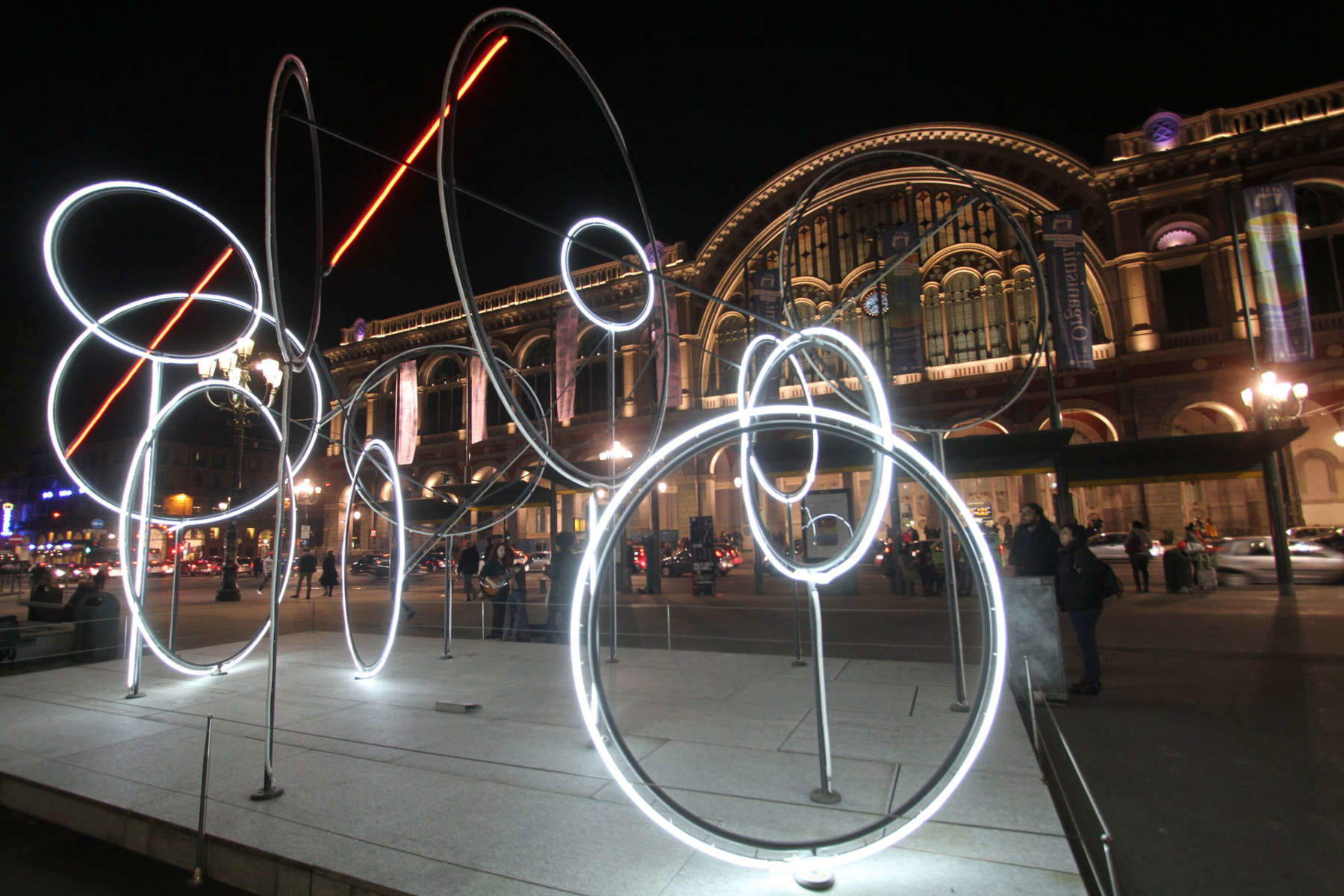
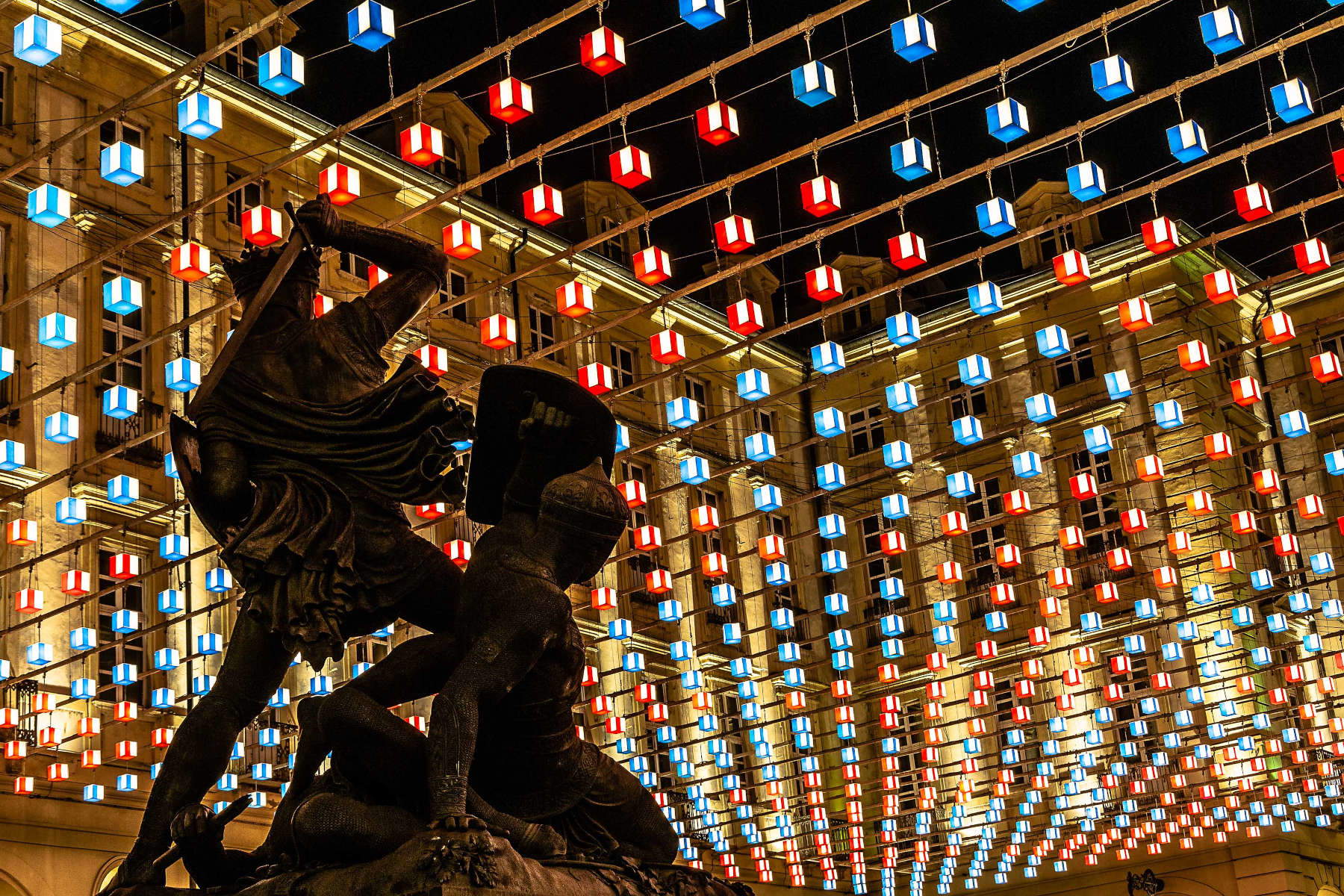
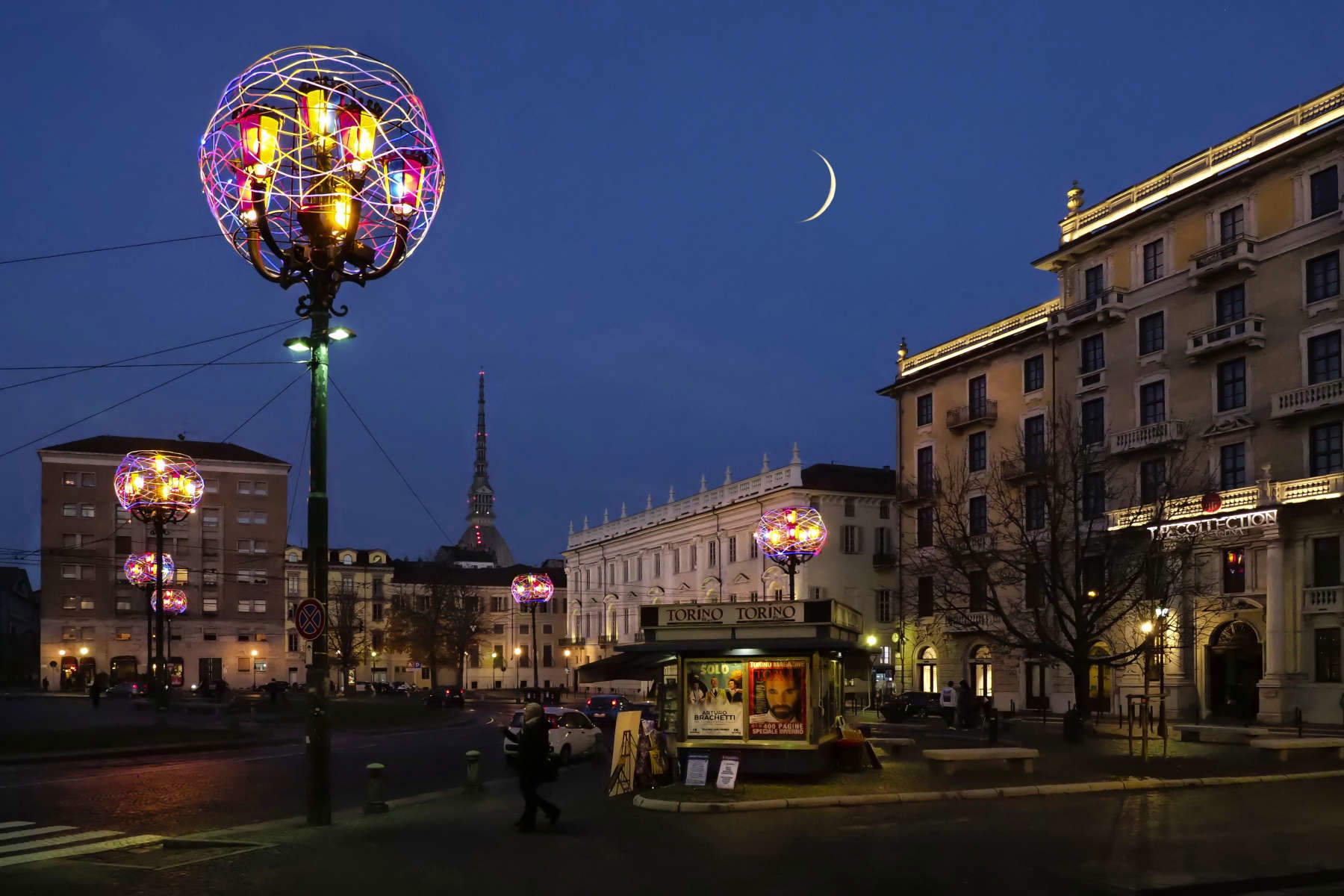
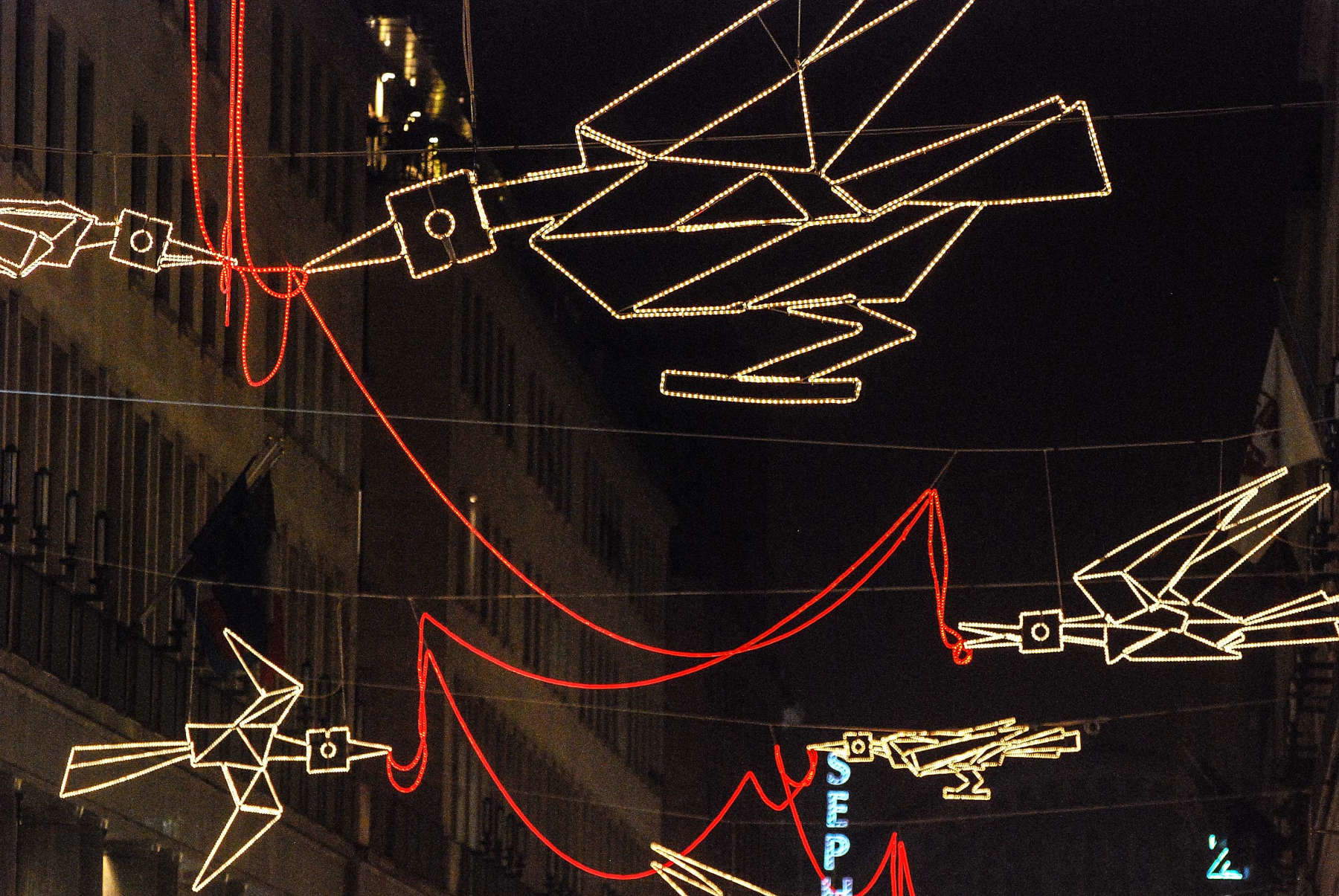
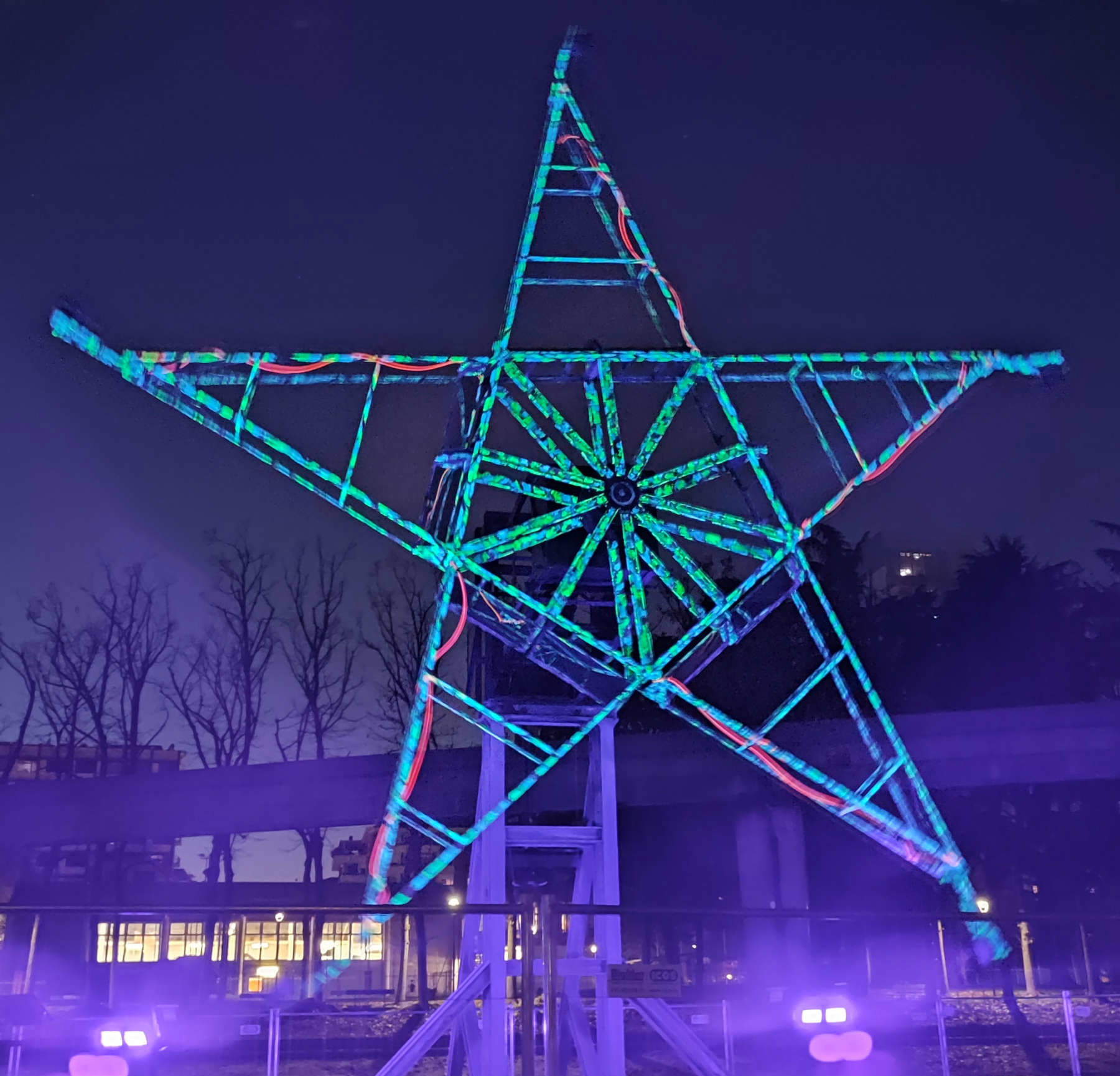
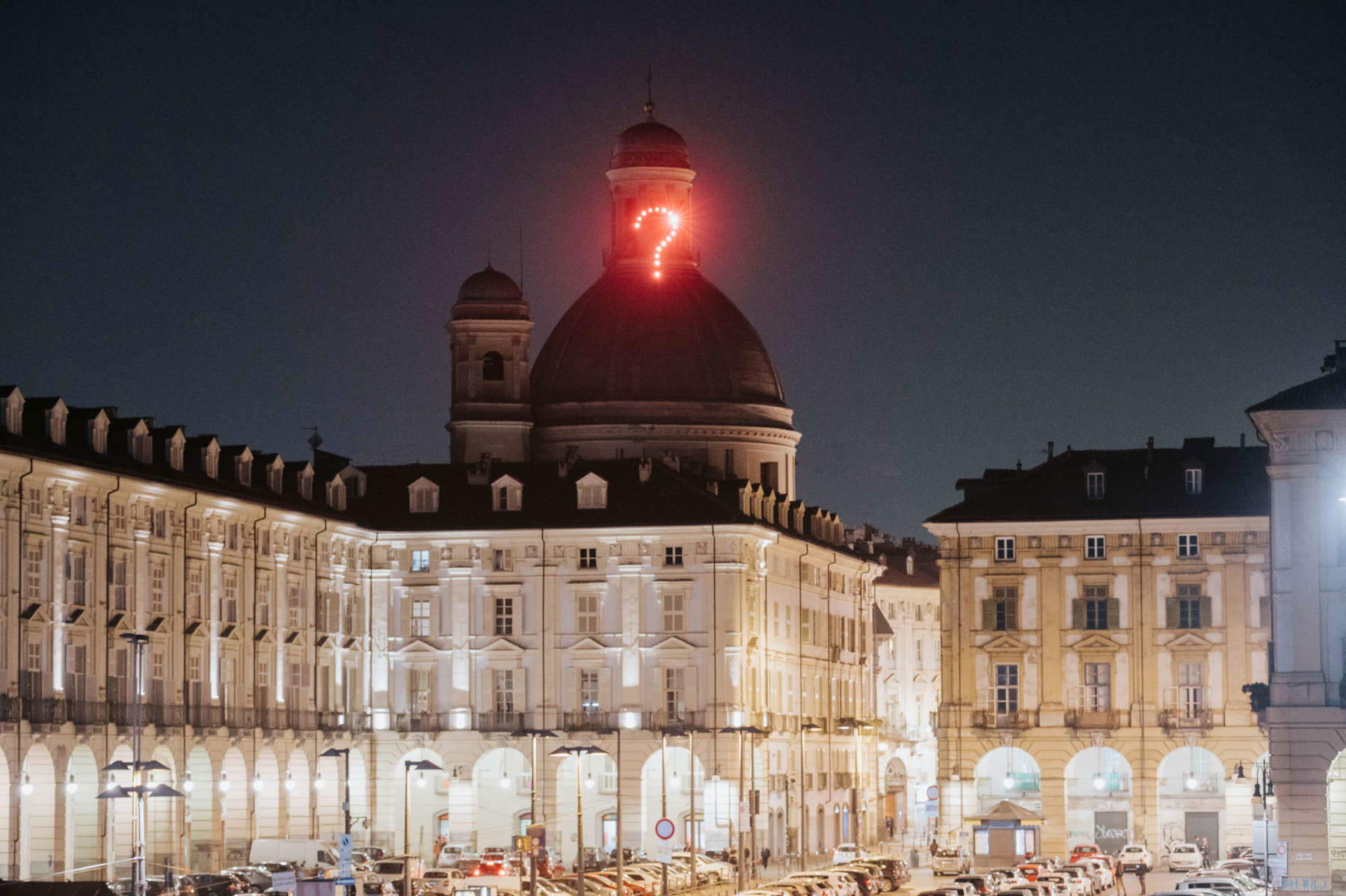
Notes on the artists
Andreas Angelidakis resides and works in Athens. His works explore the space where art and architecture intersect, influenced by new technologies. In his work, he reworks Greek ruins through digital video, soft sculptures and furniture, offering a playful interpretation that directly engages the visitor. He has participated in numerous international exhibitions, including The State of the Art of Architecture at the first Chicago Architecture Biennial, the 12th Baltic Triennial, and the Bergen Assembly in 2019. He contributed to Paul B. Preciado’s Parliament of Bodies for documenta 14 in 2017 and exhibited at the Moving Image Biennial at OGR in Turin. In 2020 he created the large-scale installation POST-RUIN Bentivoglio at Palazzo Bentivoglio, and in 2022 he presented the work Center for the Critical Appreciation of Antiquity at Espace Niemeyer in Paris. Exhibitions curated by the artist include The System of Objects at the Deste Foundation in Athens and Period Rooms at Het Nieuwe Instituut in Rotterdam.
Luigi Ontani lives in Rome and Riola di Vergato (BO). An icon of Italian art, he enjoys great international recognition thanks to an eclectic career spanning painting, performance, photography and sculpture. In the 1960s he began to devote himself to photography and video, innovating the related languages, and in 1969 he made his first Tableau Vivant, Ange Infidèle, introducing radical changes in performance art. Ontani’s Tableaux Vivants are “living paintings,” performances in which the artist takes on the role of historical, literary or mythological characters - from Pinocchio to Dante, from St. Sebastian to Bacchus - embodying historical, mythological and popular themes. His roots are in Italian cultural traditions, but his work also embraces a global vision, captivating the East and the exotic. In the 1970s he began a journey to India, which also took him to Indonesia, where he was struck by the art and culture of Bali. He has exhibited at the Venice Biennale in 1972, 1978, 1984, 1986, 1995 and 2003, and in major international exhibitions such as Identité Italienne: Art en Italie depuis 1959 at the Centre Pompidou in Paris and Italian Art Now: An American Perspective at the Guggenheim Museum in New York. He has had solo exhibitions at the PS1/MOMA Contemporary Art Centre in New York, the Serpentine Gallery in London and the Castello di Rivoli in Turin.
 |
| Turin lights up again with the 27th edition of Luci d'Artista |
Warning: the translation into English of the original Italian article was created using automatic tools. We undertake to review all articles, but we do not guarantee the total absence of inaccuracies in the translation due to the program. You can find the original by clicking on the ITA button. If you find any mistake,please contact us.



























